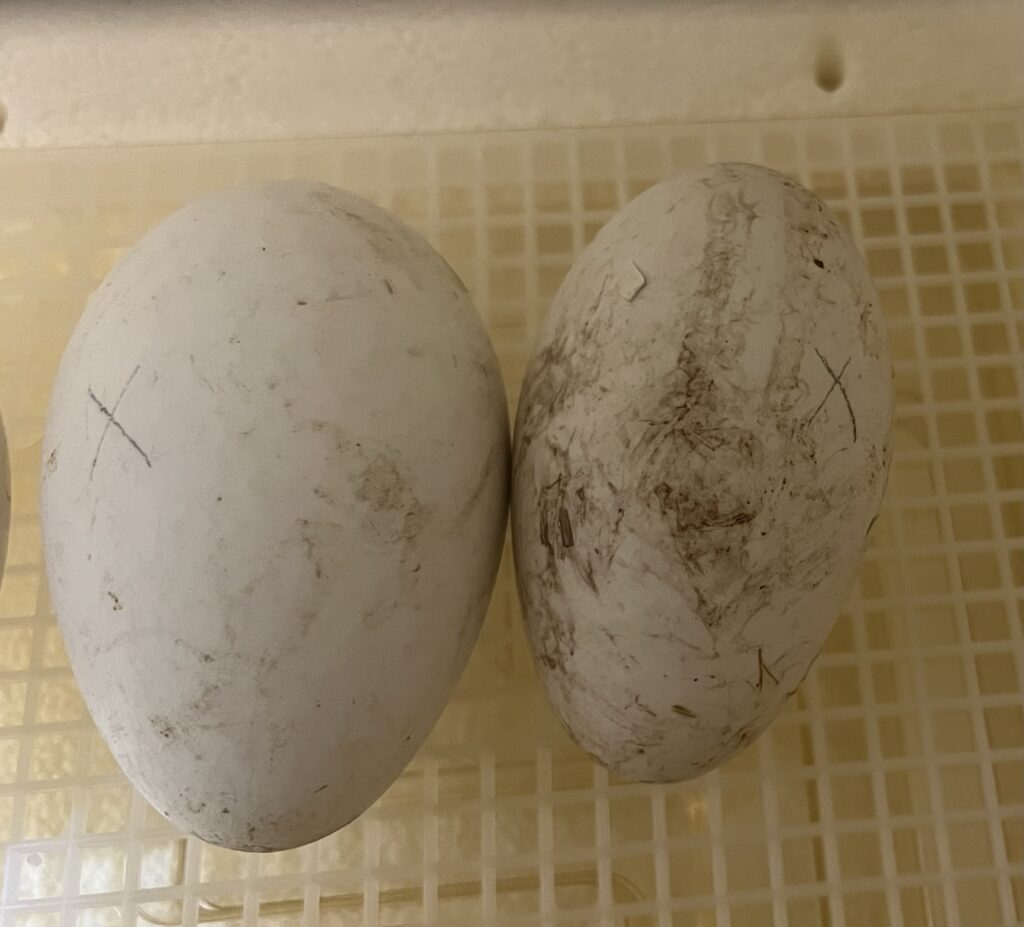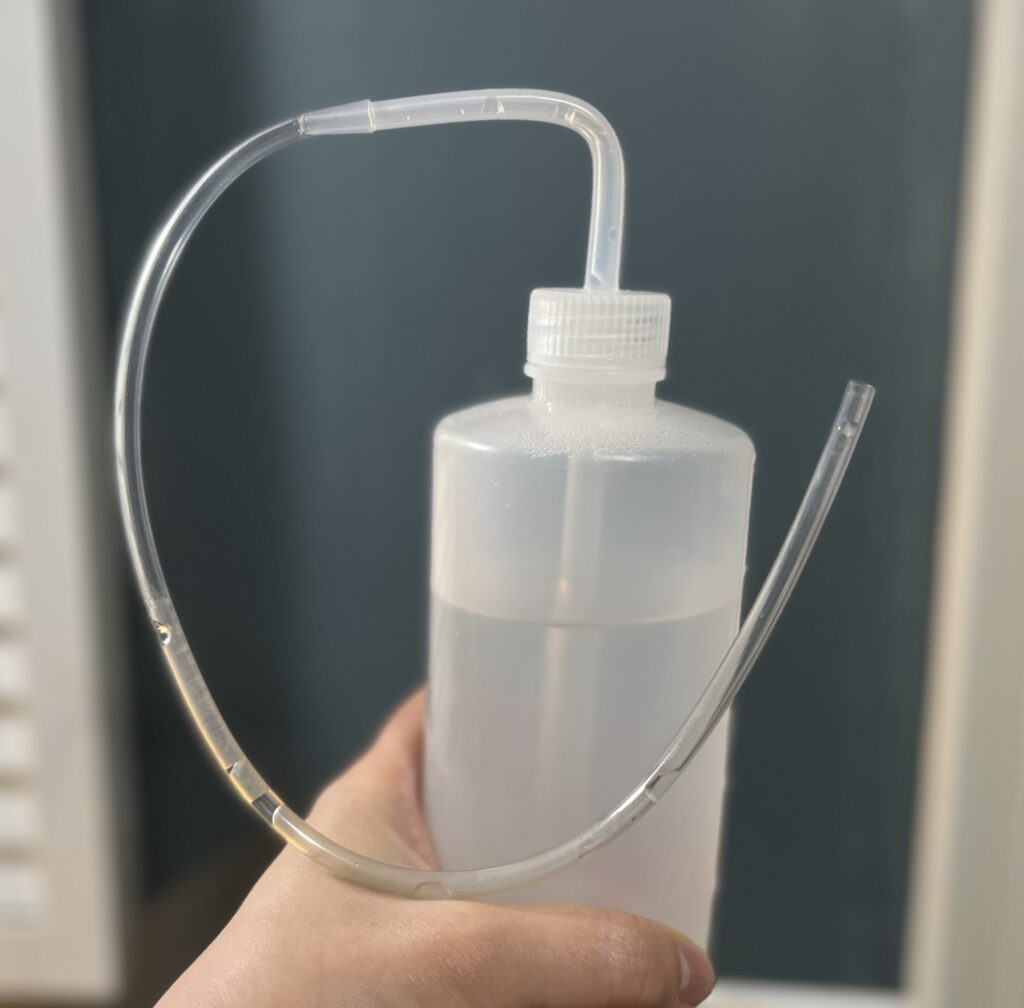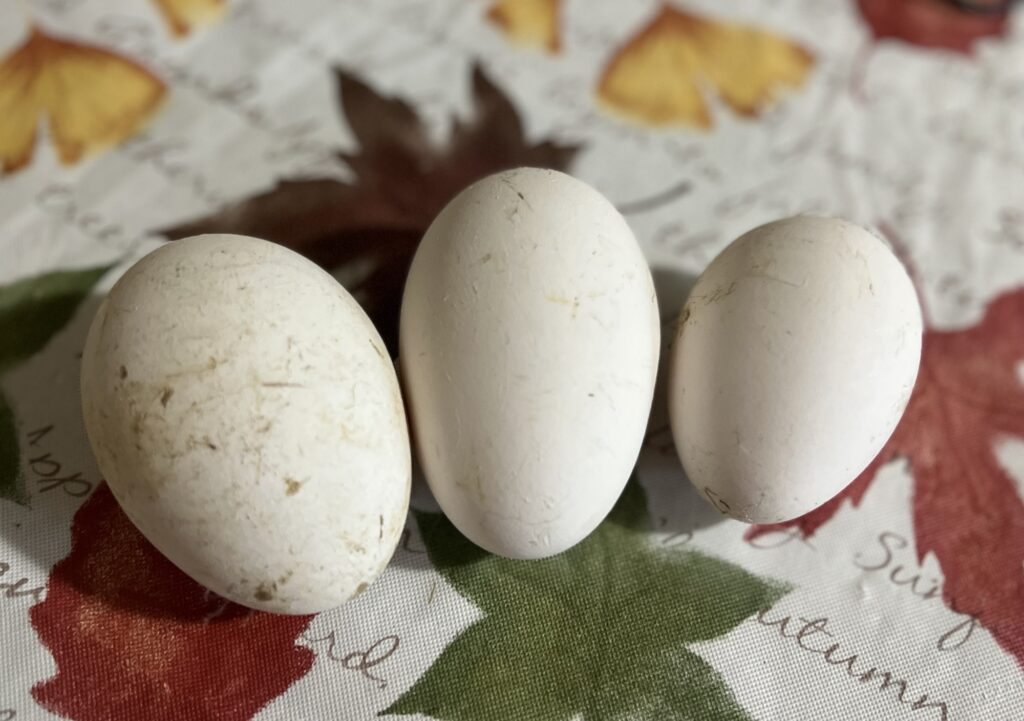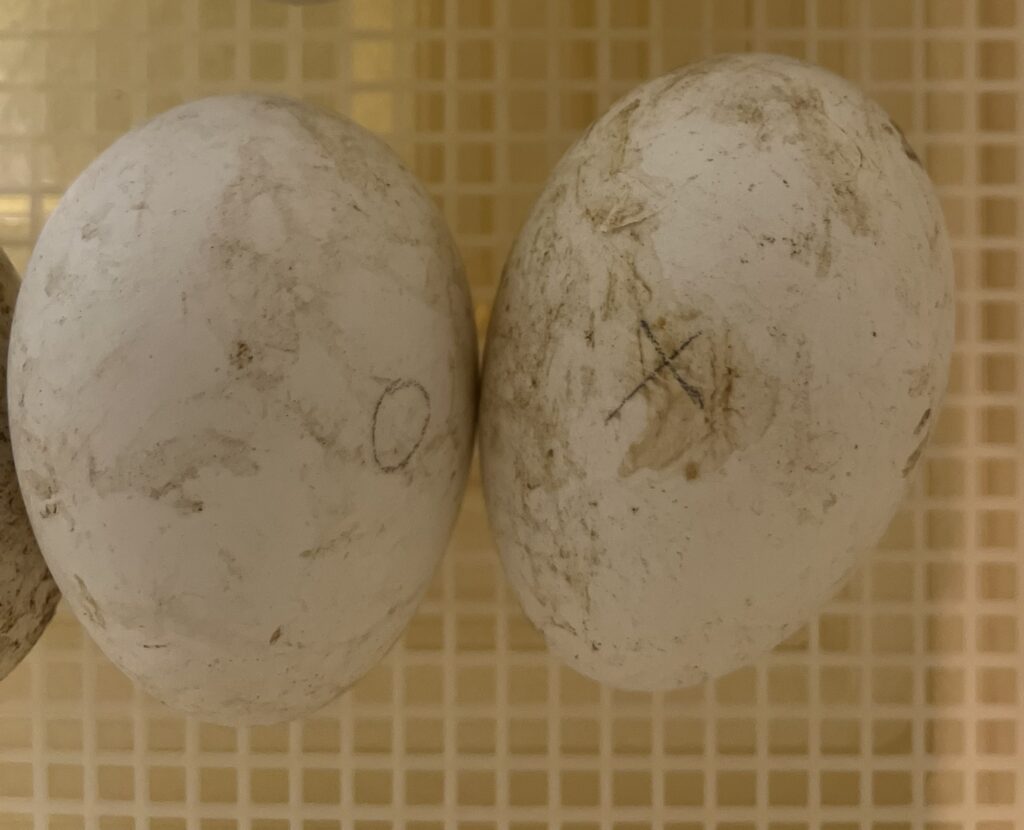
Early this morning, I checked on the Pilgrim goose eggs in the hatcher – and saw external pips. It’s day 29 of incubation, and the goslings are right on track to hatch over the next couple of days. The season’s first goslings are nearly here!
Over the past couple of days, I’ve heard peeping from inside eggs and have seen the eggs rock as the goslings move into position. While not all goslings will peep (at least when you can hear them) or cause their eggs to wiggle (at least when you can see them), those are signs that they’re active and readying themselves for the hatch.
Upon seeing the first pips, I raised the humidity by filling multiple water channels with warm water. I use a medical squeeze bottle with clear tubing attached, which allows me to feed the tubing down the air vent on the top of the hatcher. The tubing also allows me to direct the stream of water right into the channels, avoiding splashing the pipped eggs.

Throughout the day, I’ll be checking to ensure that the humidity and temperature are optimal and stable, adjusting as needed. Since I live in an area with high relative humidity, I don’t automatically raise the humidity at lockdown (which was four days ago); instead, I base the lockdown humidity on how the air cells look. If the air cells are too small, I raise the humidity; if they’re too large, I lower it. Overall, I find that lower humidity is better for hatches, preventing in-egg drownings, excessively sticky chicks, and excessively large chicks that have difficulty hatching.

Early in my incubating days – back when I followed the instructions that came with the incubators – I had problems with chicks pipping and blowing bubbles because there was so much fluid left in the egg at hatch time, and it wasn’t good for those chicks. Since I dry hatch, I don’t encounter that issue anymore. I also don’t have problems with shrinkwrapped hatchlings. Once I realized that I needed to customize my incubation environment for my area, my hatches became more successful.
As I mentioned earlier, because some of the geese are first-year layers, their eggs are smaller than the more mature geese. The eggs also vary in shape: some are slightly more round, others are narrower. At candling, the larger, rounder eggs had significantly smaller air cells than the other eggs, indicating that moisture loss was slower. In contrast, the narrow eggs had large air cells. If the incubator had been full of just narrow eggs, i would have raised the humidity a bit to slow the growth of the narrow eggs’ air cells, but with the rounder eggs’ small air cells, I kept the humidity low to try to increase their air cell size for hatch. We’ll soon see how the approach worked.

It’s been a few hours since I began drafting this post, and several more eggs are externally pipped. I always marvel at how it’s like popcorn: it may take a while for the first to go, but then it seems like the others take their cue and starting pipping, too.

Goslings can take a couple of days to go from pip to zip and hatch, so I’ll be doing my best to sit on my hands and leave those hard-working babies alone while they work their way out of those eggs. Stay tuned for updates – it’s getting exciting here on the farm!
